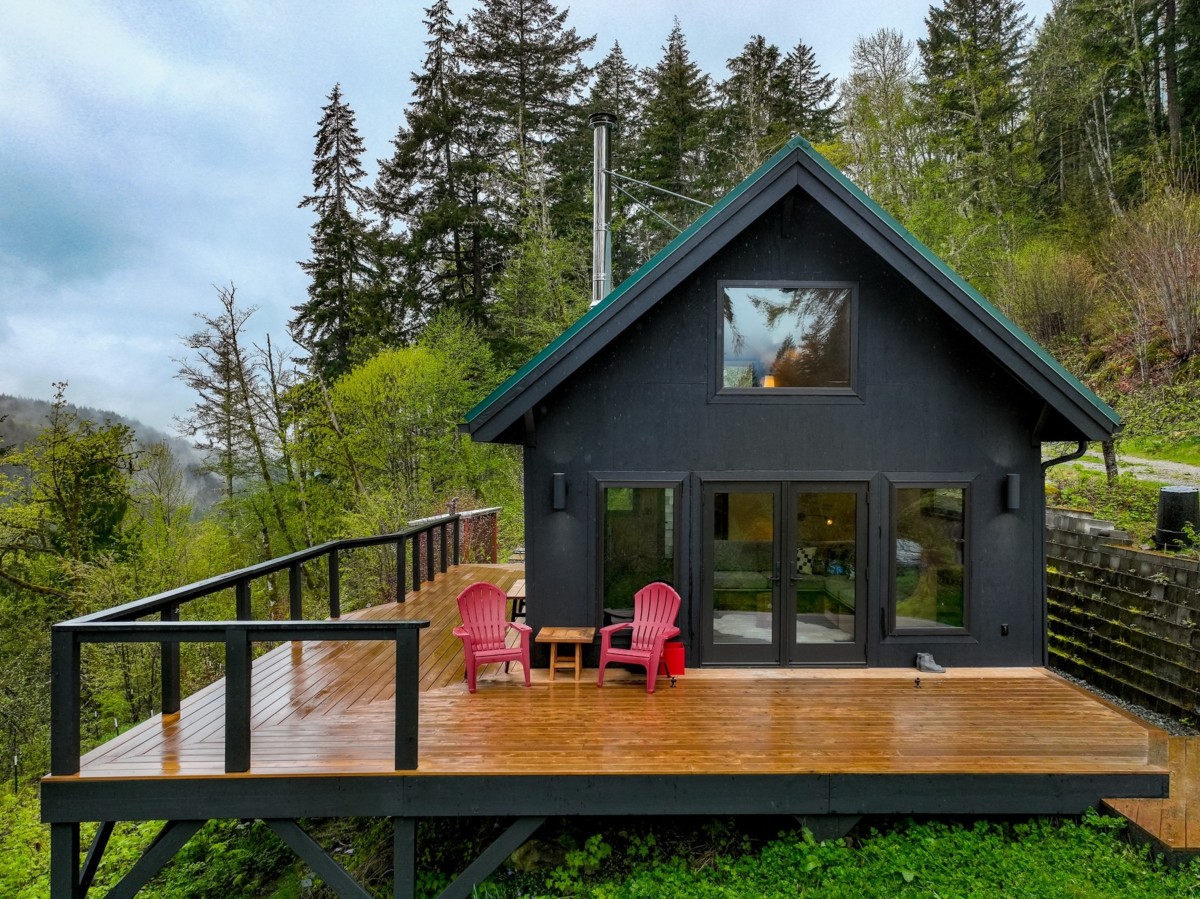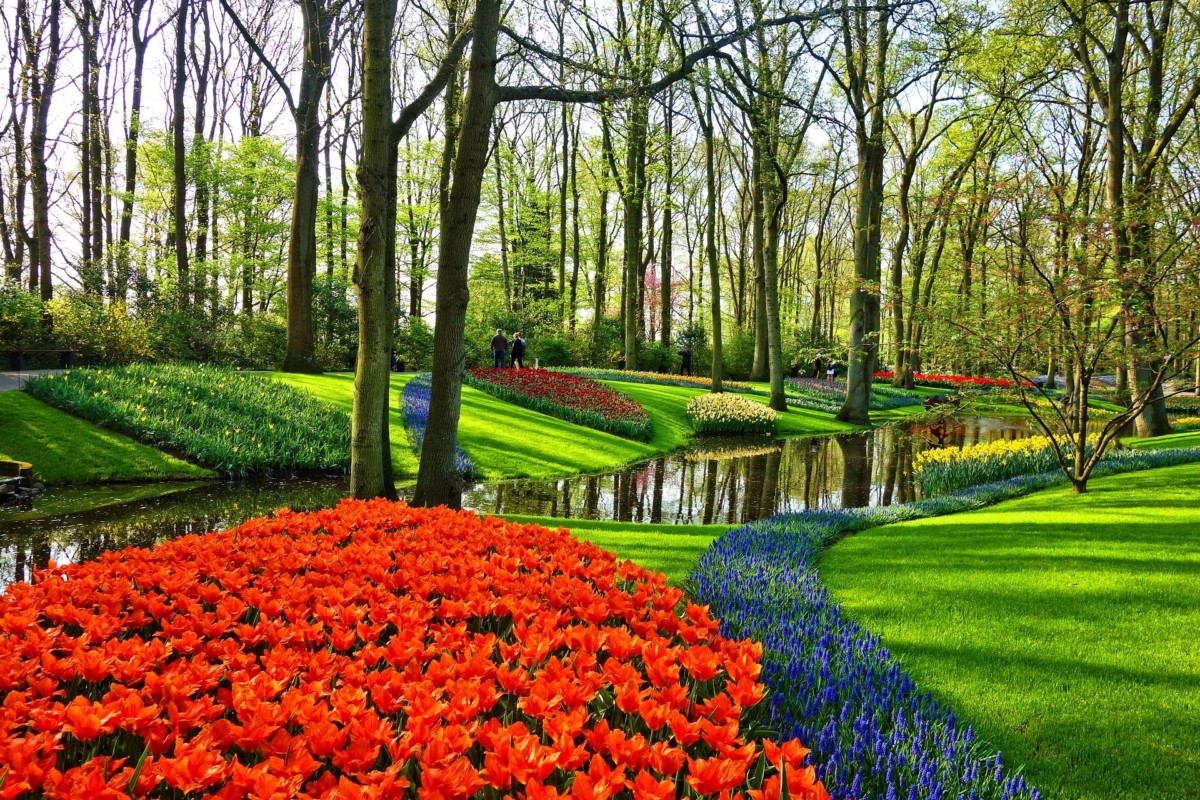What is a Rain Garden and Would it be a good idea for you to Establish One in Your Yard?
Rain gardens are designed to collect stormwater runoff from impervious surfaces, such as roofs, streets, driveways, patios, parking lots, or waterlogged yards. The runoff is then allowed to seep back into the ground slowly, preventing it from reaching local waterways. Rain gardens are planted with tough plants that thrive during brief periods of inundation and drought, providing attractive habitats for pollinators and other wildlife.
Whether you’re buying a home in a rainy city, or considering moving to Boca Raton, FL, where you get 63 inches of rain a year, this may be the perfect home improvement project. Installing a rain garden can be challenging – expect to get sweaty – but it’s all worth it for the numerous environmental benefits rain gardens provide. In this article, you’ll learn all about rain gardens, including the purpose and benefits, how they work, and expert tips for creating your own. Let’s get started.

Why is rainwater runoff a problem?
Rainwater runoff can carry pollutants from the land into water bodies, where they can cause water quality problems. Runoff can also cause flooding and erosion.
How does a rain garden work?
A rain garden is a garden that is planted in a way that allows rainwater to flow through it and be absorbed into the ground. There are many ways to catch rain for a rain garden, but one of the simplest is to use a rain barrel. A rain barrel is a container placed under a downspout to collect rainwater from the roof and other runoffs and directs it to the garden. Not only does a rain garden recycle and conserve water, but it can also help reduce water bills and protect the environment.
“A rain garden is a water-saving and material-conserving landscape feature that simplifies gardening and creates a unique aesthetic feature,” says Colorado Ecoscapes. “While they can be designed in myriad ways, the basic concept is to capture or divert rainwater from the home into a food-growing area. Many homeowners opt to have their downspouts extended with simple drainage tubing that empties free and fresh rain to the growing area, often a slightly excavated and shaped garden area, resulting in your vegetables and other plants thriving without requiring extensive irrigation or hand watering.”
What makes a rainwater garden different than a regular garden?
A rain garden is designed to absorb and filter rainwater, while a typical garden is not. Rain gardens allow 30% more water to seep into the ground than a traditional lawn, making them an excellent option for those looking to reduce runoff and improve water conservation. Although rain gardens typically appear dry most of the time, they’ll hold water during and after rainfall.
What are the benefits of rain gardens?
Rain gardens are beneficial because it helps to reduce runoff and prevents flooding. Some other benefits of rain gardens include recharging groundwater, improving water quality, and providing habitat for wildlife. Let’s dig into a few of these benefits a bit more, along with insight from rain garden experts.
Reduces water pollution and allows groundwater to recharge
Meadowview Farm & Natural Habitat Garden adds, “Rain gardens help slow the flow of water from a yard during and after a storm, reducing water pollution and allowing groundwater recharge.” Groundwater recharge is the infiltration of water from the surface into subsurface aquifers. It occurs naturally and through anthropogenic processes and is essential to the water cycle.
Reduces flooding
“With the increased unpredictability of extreme weather events, rain gardens can alleviate urban flooding by keeping water on site,” says prairie garden designers Monarch Gardens. “Rain gardens can also function as important bits of habitat for pollinators and birds, especially when they feature native plants to the local zipcode. At each level of the rain garden, the lower portion is for moisture-loving plants, and the upper level is for drought-tolerant plants. Various ecosystem services are being performed that include remediating soils, sequestering carbon, cleaning the air, and absorbing runoff while providing wildlife habitat; this is especially true with the rain garden is planted densely, with plants 12 inches apart.”
Rain gardens return the natural flow of water in a landscape
“The heart of what a rain garden is, is an attempt to bring the natural processes that support life back into the home landscape,” says EcoLandscapes Design. “Rather than pushing water into a pipe, where it flows into combined sewers that dump dirty water, and sometimes sewage, into our local streams and rivers, a rain garden is an attempt to return to the natural way water flows through the landscape – filtering through the soil where it can help plants thrive and also sequester pollutants. Like rain gardens, swales are another way to use rainwater naturally, and both when coupled with native plantings can bring life and beauty to the home.”
This landscaping technique creates an oasis for wildlife
Green stormwater infrastructure landscape company and native plant nursery Ecosystems Regernation Artisians says the “landscaping technique of rain gardens focuses on slowing the water down, spreading it out, and sinking it into the soil, which creates a perfect oasis for native plants and wildlife to thrive.”

How to install your rain garden
If you’ve decided that a rain garden works for your home, you’ll need to know how to install one. Here are some expert tips to consider before installing your rain garden.
First, it’s essential to know what kind of soil you’re working with
Leader in strategic water planning and green infrastructure design Roth Ecological recommends a water absorption test that will help you determine if a rain garden works on your property.Test the infiltration rate of your soil by digging a hole and filling it with water. If it takes more than 60 minutes for 1 inch to drop, choose a rainwater catchment tank instead.
Roth Ecological continues, “If the soil falls between 30-60min/inch, mix sand into the soil to increase water storage capacity. If it’s less, adding compost and biochar can help with retention. Use native plants that are adapted to the local climate that can handle both wet and dry periods to reduce maintenance.Check to see if your city has adopted the Follow the Drop app for help with rain gardens.
Positioning, shaping and sizing your rain garden
A rain garden should be approximately 20% the size of the roof, patio, or pavement area draining into it. The average rain garden for a residential home or small building is between 100 and 400 square feet. However, regardless of the size, each rain garden can significantly impact the environment.
This can have many shapes but are usually designed to be long, narrow, and perpendicular to the land’s slope. Plants should be placed 10 feet away from building foundations and away from water ponds.
Place a rain garden away from the house to divert water away from the foundation. Building a basin to hold rainwater so it can be absorbed into the soil, not run off. Rain garden plants have long roots to hold on to soil, preventing it from being moved by rainwater.
Rain gardens can be designed in a variety of shapes, such as kidney, wavy, round, or organic forms. Position and size the rain garden to create a unique shape and appearance for your site. A natural look with soft curves is often appealing. But you can also have an angular design for a contemporary look – or a long, thin rain garden. So rain gardens work with whatever aesthetic look you want in your garden. But whatever size and shape it is, choosing the right plants, and opting for native plants, is key.”
Collecting the rain runoff for your garden
“Rain gardens can help conserve water while providing beauty.” shares garden design group Avant Garden Design.
The first step should be a rain-barrel collection system to use the water in the garden. But an overflow system should be channeled away from the house using elements like stone-lined stream beds and catch basins. This will allow the rainwater to infiltrate into the ground. Consider planting deep-rooted, native species to soften the edges of these features and make good use of this occasional abundance.”
The best plants for a rain garden and how to care for them
It’s best to use native plants in your rain garden. Native plants don’t require pesticides or fertilizer. You may need to water them occasionally during the first and second year or during periods of little rainfall. Likewise, you’ll need to remove weeds and dead plants and replace them as needed. But once the plants are established and grown larger, they’ll out-compete weeds.
When placing your plants in your garden, the plants along the edge must be able to tolerate dry conditions. Along the slope should be plants that can thrive in both dry or wet conditions. Plants that can handle wet soil for a long time should be placed in the base of the rain garden.
Final thoughts: why you should add a rain garden to your yard
There are many benefits to having this in your landscape. They can add curb appeal, reduce runoff from storms, minimize flooding, and improve water quality. This also play a massive role in guarding our waterways against nonpoint source pollutants in runoff water. With more green spaces becoming overdeveloped, rain gardens will become vital in the future.
FAQ about rain gardens
How much does it cost?
The cost of a rain garden will vary depending on the size, location, type of plants, and labor required. However, a rough estimate for the cost of this could be around $200-$500.
Is a rain garden a pond?
No, it is not the same as a pond. Rain gardens are shallow depressions planted with native vegetation to collect and absorb rainwater runoff.
A pond is a large body of water used for irrigation, recreation, and wildlife habitat.
Does a rain garden attract mosquitoes?
No, it will not attract mosquitoes. They can help reduce an area’s mosquito population by providing a habitat for predators such as dragonflies and frogs.
